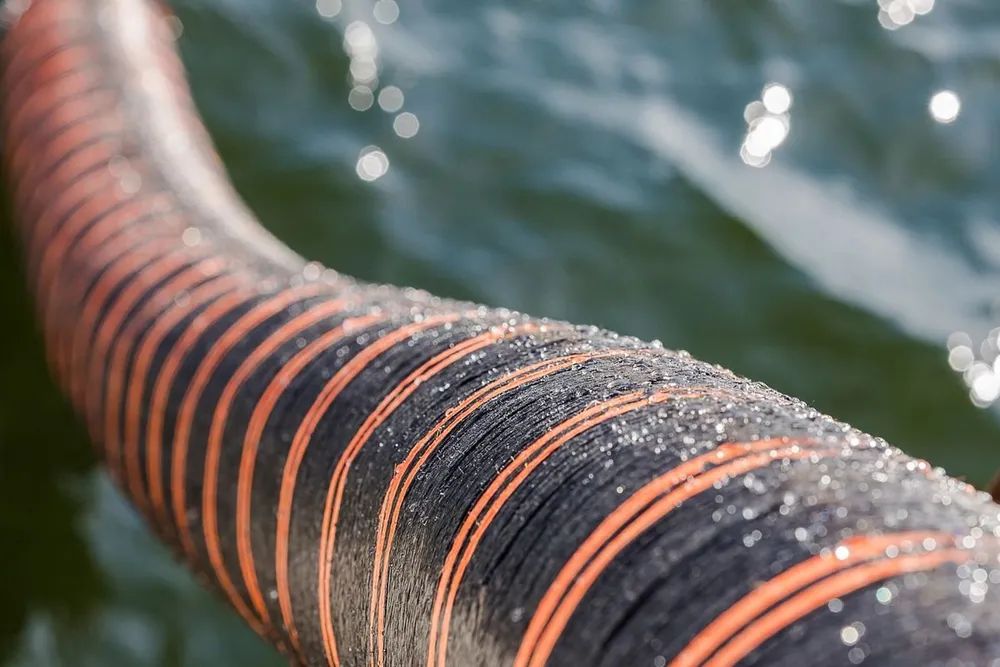Offshore wind industry faces 'thousands' of cable failures unless performance improves
Incidents across offshore wind farms highlight how weaknesses at various stages of a power cable’s lifecycle can lead to failures, outages and substantial financial loss

Offshore wind developers and grid operators who lose sleep over bottlenecks in the supply and installation of subsea cables should also worry about the cable failures set to occur on a huge scale, a study has warned.
Market intelligence firm TGS 4C Offshore analysed 383 documented global cases of subsea cable failures between 1989 and 2025 and forecast that there will be about 6,000 more between 2025–2040, posing serious challenges for already strained supply chains.
Of those documented cases, the study found 179 were attributed to unknown or miscellaneous causes, 59 were due to installation errors, 35 to mechanical issues, 25 to external impacts, 21 to design flaws and 17 to environmental factors.
The remainder were linked to anchor strikes, cable protection system (CPS) failures, manufacturing defects, fibre optic faults, ageing and jointing deficiencies.
Projecting this incidence onto growth forecasts for offshore wind and interconnectors raised serious concerns for the industry, the authors suggested.
The research showed that around 84,000 kilometres of subsea cables had been installed for interconnector and offshore wind projects at the end of the first quarter of 2025.
But global installation forecasts for 2025-2040 project suggest an additional 231,840 km are to be deployed, bringing the total to approximately 315,940 km worldwide.
“We need to think about the already constrained supply chain. Do we have enough vessels to respond? Enough trained crews? Sufficient storage for spare equipment?” asked 4C Offshore’s senior analyst for offshore transmission and cables Rameeza Duggal.
The study cited data from loss adjustment and claims management firm Lloyd Warwick suggesting that 83% of all insurance claims are cable-related, and suggested this could get worse.
The financial impacts of cable failures were also described as “disproportionately high”, considering that cable procurement typically accounts for less than 10% of total capital expenditure for offshore wind farms.
Installation performance critical
While subsea cables face threats throughout their entire lifecycle — from design and manufacturing to decades of operation in challenging and often volatile seabed conditions — 4C Offshore identified installation errors as the leading contributor to failures. Factors include improper handling, unsuitable or poorly maintained equipment, incorrect tension control and external trauma from obstructions or fixed structures.
“Even minor undetected defects at this stage can lead to costly operational outages. These risks are amplified when workforce training or procedural discipline is lacking,” the study noted.
Similarly, relatively minor mistakes during cable laying or jointing can lead to persistent issues, particularly when combined with weak or unstable seabed conditions or inadequate protective measures.
The study also analysed failures stemming from the design phase among the factors that can compromise long-term performance and accelerate failure mechanisms.
These included inaccurate electrical, mechanical, or thermal load calculations, incorrect assumptions regarding burial depth and seabed mobility or incomplete assessment of vortex-induced vibration effects.
The study showed how defects introduced during manufacturing can create latent weaknesses, as could integrity issues rooted in the jointing and termination phase.
Faults were often interrelated, with poor design sometimes creating the kind of mechanical overstress that led to failure.
Hornsea 2 case study
The 4C offshore study provided a recent example of export cable failures at a UK wind farm caused by screen clamp design defects.
On 7 August 2023, Hornsea Two experienced an unplanned outage on the Far Shore Northwest export cable (L2 phase). Investigation concluded that the cable screen clamp had been overtightened during installation, leading to subsequent loosening and reduced contact pressure with the lead sheath. This increased electrical resistance at the connection point, generating excessive heat and ultimately causing failure.
The installation contractor, NKT, was identified as having installed the component incorrectly, highlighting the critical importance of correct torque application and mechanical integrity in jointing operations.
The study covered 149 failure cases in the UK and data from several iconic offshore wind projects, including Hornsea One and Hornsea Two (design and installation errors), East Anglia One (joint misalignment), Gwynt y Mor (manufacturing/design defects) and Beatrice (environmental and inherited design issues).
More than 50% of all failures in the study occurred within the first 10 years of operation.
Average repair downtime was 40 days for array cables and 60 days for export cables.
“Failures, whether latent or immediate, can originate in any lifecycle phase but often manifest during high-load operational conditions, with significant commercial and operational consequences,” the report stated.
"Strengthening quality assurance and installation practices in these early stages could significantly reduce failure rates."
Transparency plea
The fact that 179 failures fell into the “other” category where the root cause was either unknown or could not be established from available information raised questions about the availability of transparent data sharing in the subsea cable industry, 4C added.
“Without detailed root cause reporting, opportunities to predict or prevent failures are lost,” the authors warned.
Greater industry collaboration would enable more accurate trend analysis – for example, identifying relationships between seabed conditions, cable types, and specific failure modes, they suggested.
The study advocated proactive O&M strategies, advanced monitoring, and stronger installation standards, alongside faster, more coordinated regulatory and financial support when failures occur.
(Copyright)